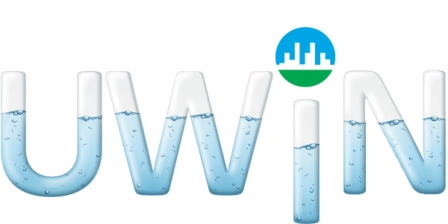Project A2-1
Project Team: Elie Bou-Zeid, PI – Princeton University
Claire Welty – University of Maryland, Baltimore County
Zhihua Wang – Arizona State University
Project Overview
Around 3.65 billion people now live in urban areas, accounting for 50% of the world population. By 2050, the number will increase to 6.25 billion, about 67% of the world population at that time (United Nations 2012). When considering economic output and energy use, the importance of cities is even greater: they contribute about 80% of the economic output of the world and account for about 70% of its energy consumption (The Global Commission on the Economy and Climate 2014). Reducing the energy and water needs of cities, understanding their environmental footprint, and mitigating their vulnerability to climate change will therefore be a central challenge for humanity in the coming decades.

At present, most urbanization research focuses on individual pieces of this challenge (e.g., building energy consumption, green infrastructure), partly because we do not yet understand all these individual pieces and partly because we lack robust comprehensive and integrated models for cities. The aim of project A2.1 is to integrate the wide range of expertise in the UWIN SRN in order to stimulate groundbreaking advances in our ability to model individual components of the urban system, as well as the integrated system itself. To that end, we will couple existing models of the atmosphere, surface and subsurface in urban terrain into a comprehensive modeling framework. Furthermore, we will simultaneously develop and expand these individual models to more accurately describe the processes they already capture, as well as to allow them to capture additional processes that are central to the urban water challenge, and how it interacts with the energy and climate challenges.
More specifically, we will couple the Weather Research and Forecasting (WRF) atmospheric model, the urbanized Noah land surface model where an urban canopy model (UCM) is used as a special representation for urban terrain, and the ParFlow subsurface flow model. The UCM will be the component where most of the urban processes reside; for example, it is the model layer where urban radiative trapping, anthropogenic heat and water emissions, green infrastructure, and infiltration/evaporation in urban soils and green roofs (precipitation is given by WRF) are represented. Through this project, we will expand the UCM into a more general urban model (though not a fully-encompassing one yet) so that it can dynamically represent the interplay between urban water, energy and climate. This will entail adding various features to the model, including but not limited to: i) representation of urban trees and green infrastructure (in collaboration with project B2-1); ii) simple models of urban water demand (particularly irrigation demand), how it can be met from alternative water sources (such as the one investigated in project B1-1), and how it interacts with energy demand and urban microclimatological change; and iii) urban thermal comfort (in coordination with project (A2-3). The expanded and coupled modeling framework will be validated against a heterogeneous and expansive range of observations, and will then be applied to understand historic extreme events (e.g., heat waves, floods, droughts) and how they influenced the 6 metropolitan regions covered by the SRN, as well to analyze the impact of future extreme events under project A 2.2.

Recent Comments